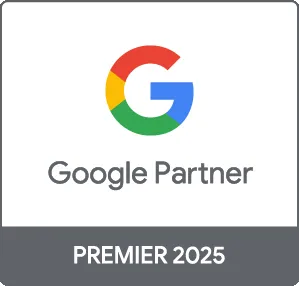Google Ads can be a powerful tool for driving traffic and generating leads when managed effectively. A strategic approach to Google Ads management can lead to higher click-through rates (CTR), better conversion rates, and a stronger return on investment (ROI). In this article, we'll explore key tips and best practices for optimizing your Google Ads campaigns, ensuring you get the maximum value from your advertising budget.
Understanding Google Ads Management
Good Google Ads management involves more than just creating ads and setting a budget. It requires continuous monitoring, analysis, and adjustment to improve performance. In essence, it's about knowing your audience, targeting the right keywords, and crafting compelling advertisements that convert.
1. Define Clear Goals
Before you start your Google Ads campaign, it’s crucial to define clear and specific goals. Are you aiming to increase website traffic, generate leads, or boost sales? Setting measurable goals will help you track the success of your campaigns effectively.
2. Conduct Thorough Keyword Research
Keywords are the backbone of any successful Google Ads campaign. Here’s how to conduct effective keyword research:
- Use Keyword Tools: Tools like Google Keyword Planner and SEMrush can help identify relevant keywords with high search volumes.
- Consider Long-Tail Keywords: Targeting long-tail keywords can lead to more qualified traffic and higher conversion rates.
- Analyze Competitors: Look at what keywords your competitors are targeting to uncover new opportunities.
3. Optimize Ad Copy and Design
Your ad copy is crucial for attracting clicks. Follow these tips to optimize your ads:
- Use Strong Calls-to-Action (CTAs): Encourage users to take action by using compelling CTAs in your ad copy.
- Highlight Unique Selling Points (USPs): Focus on what sets your business apart from the competition.
- A/B Testing: Test different ad variations to determine which ones perform best.
4. Utilize Targeting Options
Google Ads offers various targeting options to help reach your ideal audience, including:
- Location Targeting: Show your ads to users in specific geographic areas.
- Demographic Targeting: Target users based on age, gender, income, and more.
- Remarketing: Re-engage users who have previously interacted with your website.
5. Monitor and Analyze Performance
Consistent monitoring is key to successful Google Ads management. Use Google Ads reporting tools to track key metrics such as:
- CTR: The percentage of clicks your ads receive compared to impressions.
- Conversion Rate: The percentage of users who take the desired action after clicking on your ads.
- Quality Score: A score that affects your ad rank and CPC based on keyword relevance and ad quality.
6. Adjust and Optimize
Based on performance data, continuously tweak your campaigns. This could involve:
- Adjusting keywords based on performance.
- Updating ad copy to improve engagement.
- Reallocating budget toward high-performing campaigns.
Conclusion
The best Google Ads management combines strategic planning, thorough research, and ongoing optimization. By defining clear goals, conducting keyword research, writing compelling ads, utilizing targeting options, and consistently monitoring performance, you can maximize ROI from your Google Ads campaigns. At Prebo Digital, we specialize in creating effective Google Ads strategies tailored to your business needs. Ready to take your advertising to the next level? Contact us today for a free consultation!





